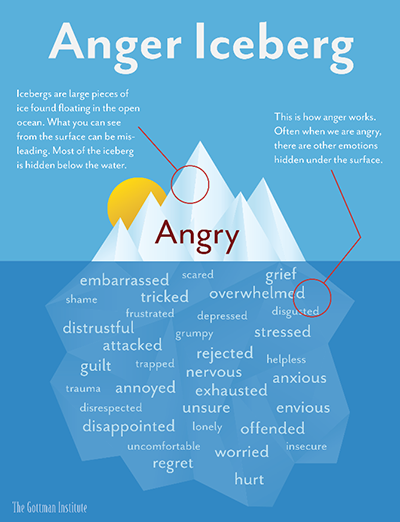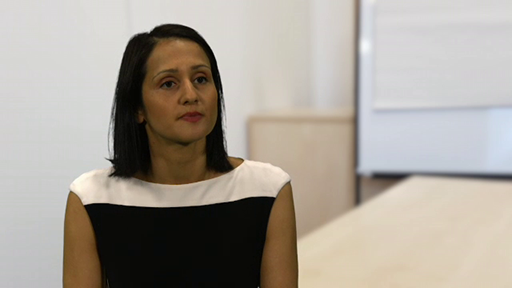2.1 Identifying and understanding different emotions
This section includes:
- Explanatory text
- An information box on “Digging down to up-skill”
- 2 videos
- 1 activity on “Using emotions productively in legal work”.

As this diagram demonstrates, it is not always easy to identify which emotion you are experiencing. You may think you are feeling one particular emotion, but there may actually be a number of different emotions contributing to your experience. If your reaction to an emotion is to “think like a lawyer” and try to ignore or rationalise it, the likelihood is you will only identify what’s on the surface. This can lead to you misunderstanding what’s happening and missing valuable information and cues, as demonstrated by the following examples.
Digging down to up-skill
Examples adapted from Silver (2004).
You find one elderly client particularly difficult to deal with, often getting annoyed when they seem to talk around issues without getting to the point. You initially feel that the client is being deliberately difficult and obstructive However, when you think about why this is so annoying, you realise it reminds you of an elderly relative who you feel guilty about avoiding visiting. You also realise you are very anxious about having enough time to submit an important document on another case and that this has affected your response.
You look forward to seeing one of your clients who you feel has a similar outlook on life and who you get on with extremely well. You are particularly sympathetic to your client’s case and feel strongly that they are in need of your help. However, when you begin to add up the time you have spent on this case you realise that you are attracted to the client and that these feelings (sometimes known as “counter-transference”) are influencing your perception of their case. There is also an element of pride, as you are keen to demonstrate your abilities to the client and impress them.
This video of occupational psychologist, Dr Rajvinder Samra, explains more about how identifying and understanding emotions can impact on your work.
Emotions in the workplace

Transcript
This video gives examples of how one legal professional has learnt to acknowledge her emotions.
Acknowledging emotions

Transcript
Activity 2: Using emotions productively in legal work
Identify any times when you have made a work decision based (at least in part) on your emotions?
2. Exercising your judgement
